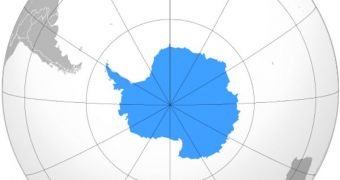Over the course of its restless history, our planet has also experienced bottlenecks, series of events that almost destroyed all life on Earth. There were five known such instances, which are now called extinction events. During these ages, which scientists have yet to analyze in full detail, most animal and plant life almost died out. Some of the extinctions were so brutal, that only a few species survived them. A new body of work now seems to suggest that these creatures, or some of them at least, used Antarctica, then free of its ices, as a life boat, in order to stay alive, NewScientist reports.
Recently discovered fossil records on the Southern Continent appear to show that this was especially true for the Permian–Triassic (P–Tr) extinction event, informally known as the Great Dying, the largest catastrophe in the history of our planet. It took place some 250 million years ago, and experts estimate that approximately 90 percent of all animal species living on the land were exterminated. The event was also the only extinction that significantly affected the number of insect species. During these troubled times, some species found safety in Antarctica, as the fossil records indicate.
Researchers made this discovery after finding the fossilized remains of Kombuisia antarctica, a cat-like ancestor of mammals but one that lived many millions of years before the first modern mammals appeared. Evidence of the animal has also been discovered in South Africa, so the investigators, led by Field Museum expert and geologist Jorg Frobisch, concluded that the creature must have escaped southwards when there was still a single continent on the surface of the planet. Its name was Pangea, and it looked like a single large island in the middle of a planet-wide ocean. Over millions of years, it separated into the continents we are familiar with today.
“Antarctica wasn't covered in ice then, but had a cool climate, and maybe lay further from the erupting Siberian volcanoes and their beastly atmospheric effects,” Mike Benton explains. The scientist is a vertebrate paleontologist at the UK-based University of Bristol. He reveals that the land mass we now call Antarctica was at that point located some 60 degrees South of the Equator, and was therefore a lot warmer than it is today. In fact, the land began to accumulate ice about 35 million years ago, according to some studies.

 14 DAY TRIAL //
14 DAY TRIAL //